How Israel's Iron Dome and array of air defences responded to Iran's ballistic missile attack
Iran has used some of its most powerful weapons to unleash a major attack on Israel in response to the killing of senior Hamas, Hezbollah and Revolutionary Guard leaders.
Sirens rang out and skies lit up across the country as nearly 200 ballistic missiles were fired from Iran on Tuesday night.
Experts say it was the largest ballistic missile strike on a nation state in history.
But despite the scale and force of the attack, Israel said most of the missiles were intercepted by its Iron Dome and array of air defences.
What is the Iron Dome?
ABC reporters in Israel described seeing a barrage of rockets raining overhead.
Explosions rattled Jerusalem and the Jordan River valley as the population was told to head to bomb shelters.
But instead of the missiles hurtling towards targets, many were exploded in mid-air by the country's Iron Dome and network of air defences.
No injuries were reported in Israel, but one man was killed in the occupied West Bank, authorities there said.
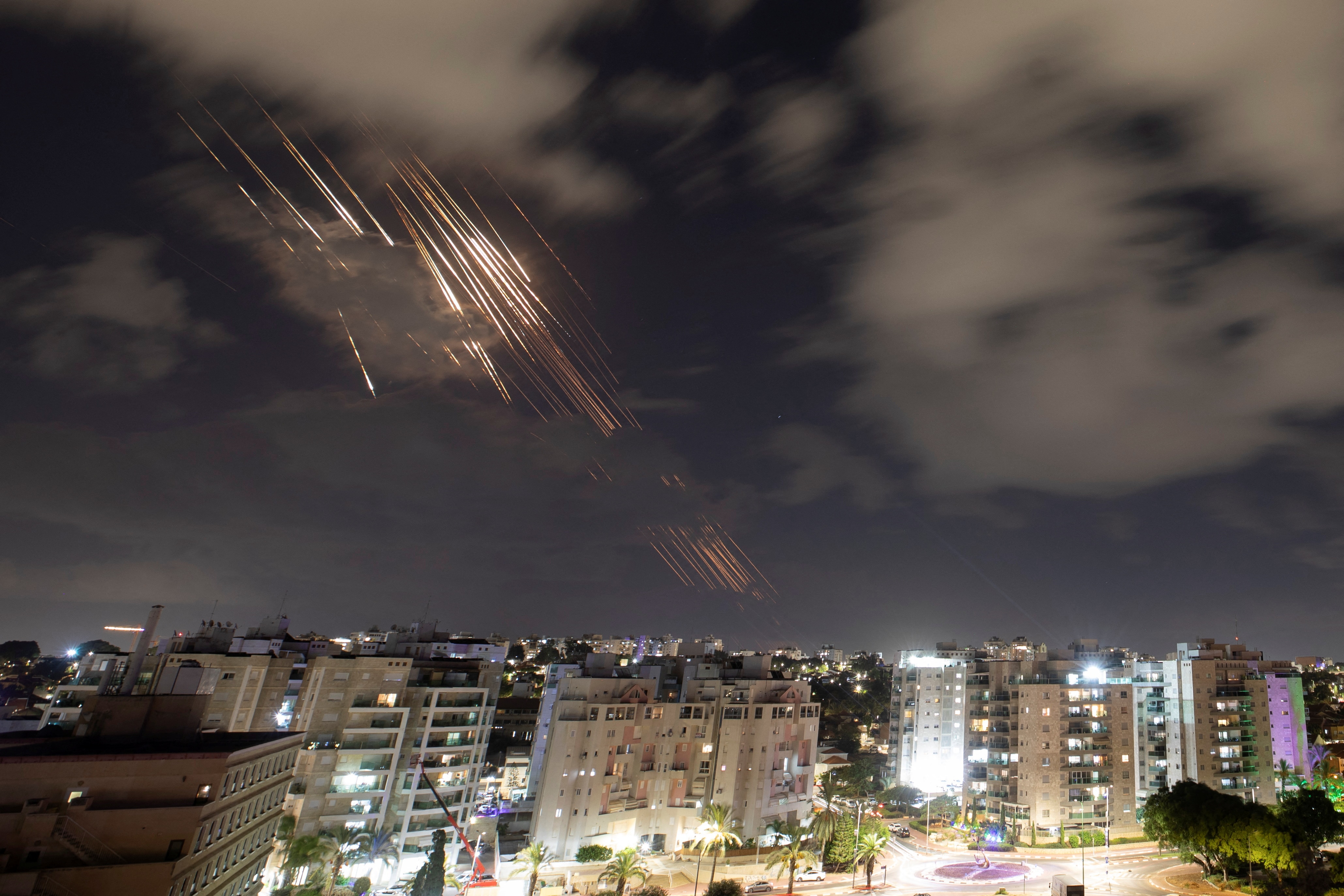
Israel's Iron Dome anti-missile system intercepts rockets above Ashkelon in Israel, after Iran's attack.
The Iron Dome has been described as one of the most sophisticated air defence systems on the planet.
It was specifically designed to fend off short-range rocket and missile attacks from neighbouring militant groups, particularly Hamas and Hezbollah.
The system uses radars to detect incoming threats, such as rockets, missiles, mortars and drones.
It then fires its own intercepter missiles to take them out.
The system determines whether a rocket is on course to hit a populated area.
If not, the rocket is ignored and allowed to land harmlessly.
Developed by Rafael Advanced Defense Systems with US backing, it became operational in 2011.
Since then, it has intercepted thousands of projectiles launched by Hamas and Hezbollah, according to the Israeli military.
There are 10 Iron Dome batteries strategically placed across the country, providing city-sized coverage against rockets with ranges of between four and 70 kilometres.
A naval version of the Iron Dome to protect ships and sea-based assets, such as aircraft carriers, was also deployed in 2017.
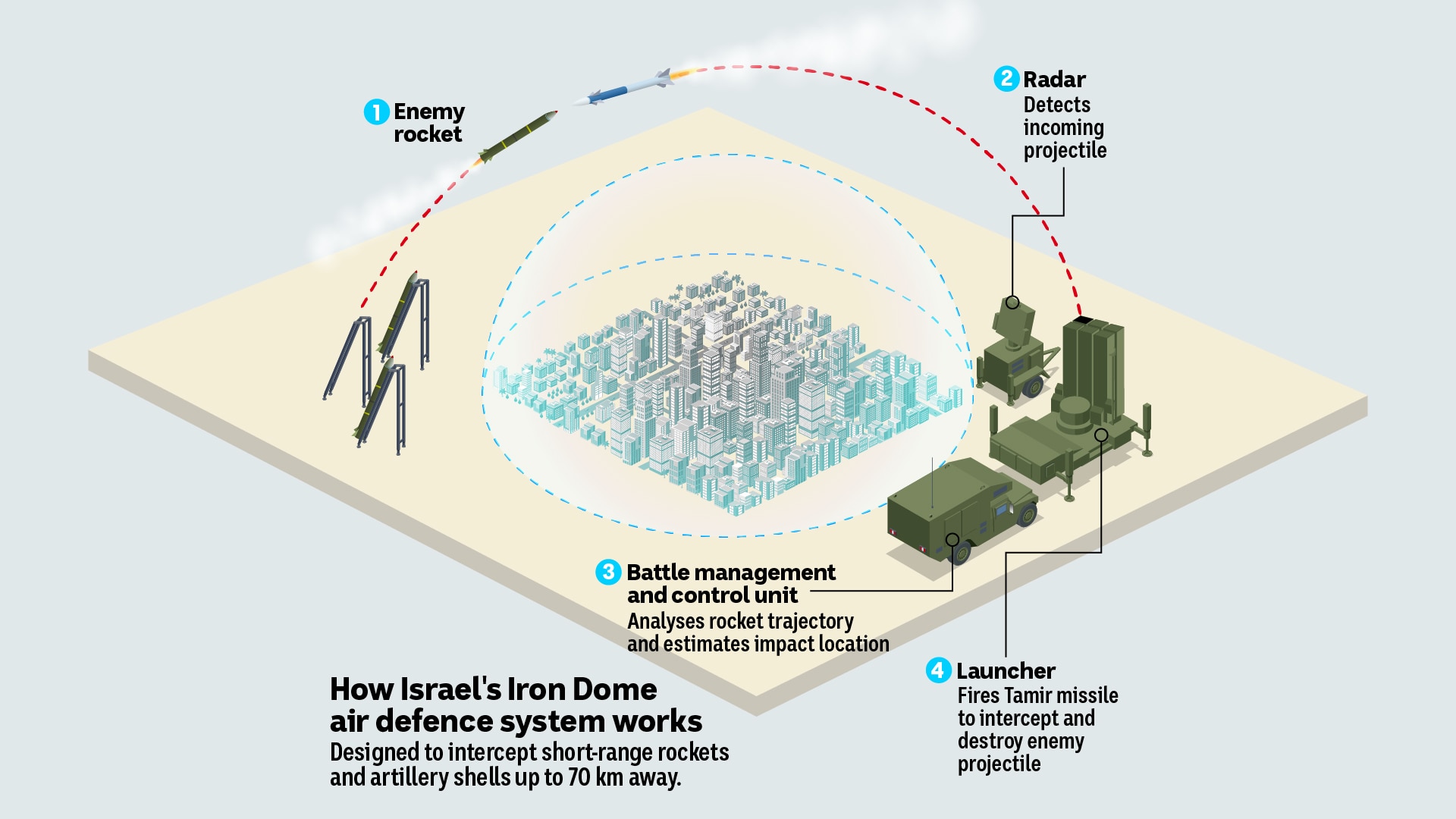
Israel's Iron Dome air defence system was developed to respond to threats from Gaza and southern Lebanon.
What are ballistic missiles?
Iran fired more than 180 ballistic missiles in Tuesday's attack, according to Israel.
Behnam Ben Taleblu, an Iran analyst from the Foundation of Defense and Democracies, said the strikes were "record-breaking and historic".
"Tehran was trying to find a way to repair its shattered deterrence, and it did it in this grotesque way that included the largest ballistic missile barrage against another nation state in history," he told ABC RN Breakfast.
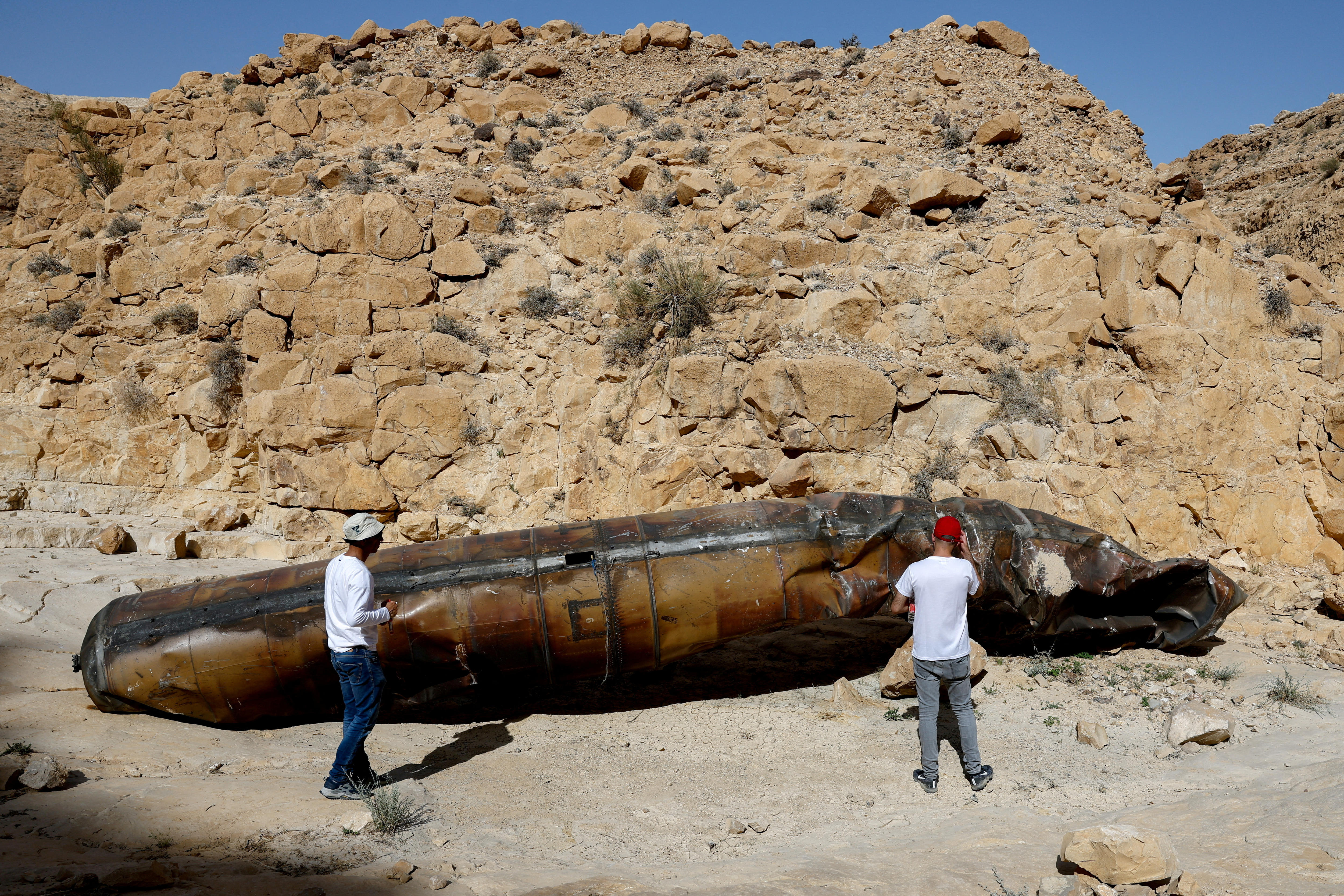
Apparent remains of a ballistic missile lying in the desert, following a massive missile and drone attack by Iran on Israel in April.
Ballistic missiles are powered by rockets initially but then they follow an unpowered, free-falling trajectory toward their targets.
Michael Shoebridge, director and founder of Strategic Analysis Australia, said they were launched "like a bullet from a gun".
When they hit their highest speed they become ballistic, soaring to high altitudes before taking a deep and fast dive.
"They go on a sort of parabolic arc," Mr Shoebridge said.
"A trajectory that goes up fast and heads down equally as fast."

People take shelter during an air raid siren in central Israel.
Iran launched another major attack this year, using about 300 long-range drones, ballistic missiles and cruise missiles with much slower speeds.
Many were shot down by a US-led coalition, while others apparently failed at launch or crashed in flight.
What are Iran's Fattah missiles?
Iran's Revolutionary Guards said it used hypersonic Fattah missiles for the first time in Tuesday's bombardment, and 90 per cent successfully hit their targets in Israel.
The Israeli military reported only some fell in central and southern Israel.
Iran unveiled the Fattah ('conqueror') missile in June last year, claiming that they were hypersonic with the ability to hit speeds of Mach 13-15.
A hypersonic weapon is merely something that travels at Mach-5 or faster.
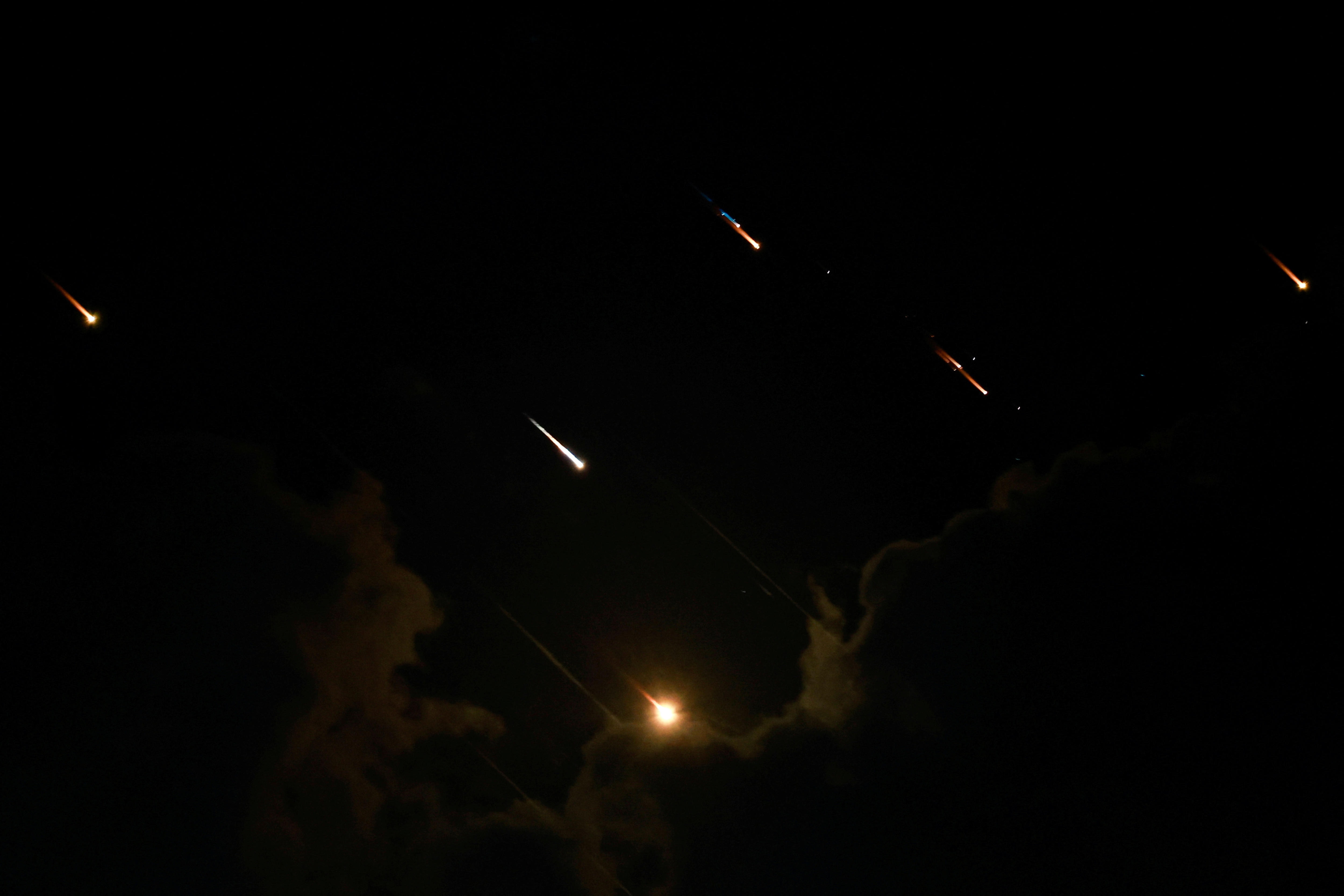
Rockets fly in the sky after Iran fired a salvo of ballistic missiles at Israel.
Military analysts say it would be the first time Iran had used the missiles.
The precision-guided missile Fattah has a range of 1,400 kilometres, and was said to have manoeuvrability and "stealth ability" to pass through radar systems.
Mr Shoebridge said there were different variants of the Fattah missiles.
The longer the range, the higher they can go and travel on their high-speed arc towards targets.
How were so many intercepted?
An Israeli security official said in cooperation with the United States, the Israeli Air Force intercepted many of the missiles.
However, there were some direct hits damaging buildings.
Israeli Rear Admiral Daniel Hagari said central and southern Israel received limited strikes.
A video released by the military showed a school in the central city of Gadera heavily damaged by an Iranian missile.
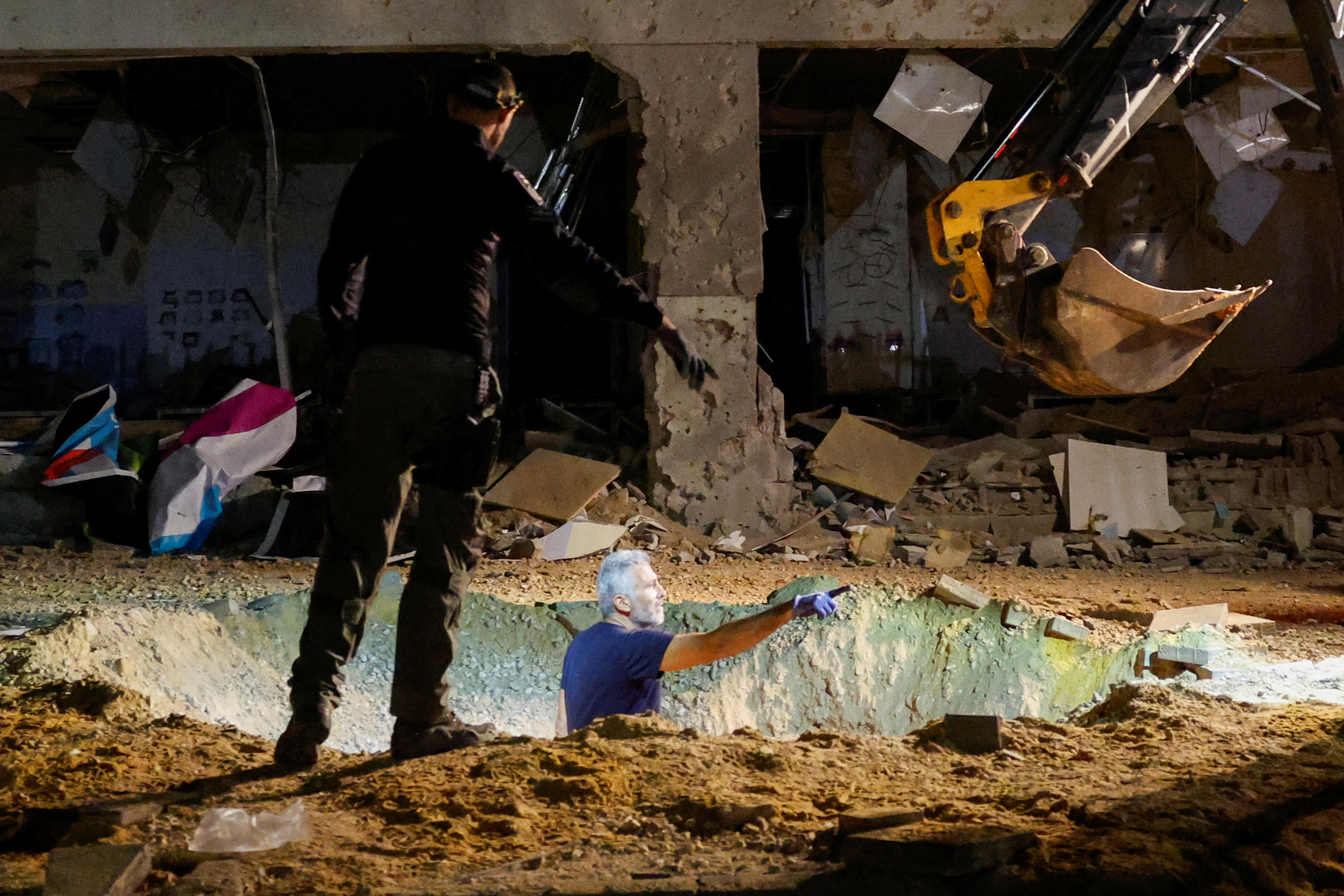
Israeli rescue force members inspect the site where a missile fired from Iran towards Israel hit a school building.
Mr Shoebridge said the Iron Dome was not solely responsible for thwarting the majority of the missile strikes.
Israel has a layered air defence system, which he described as "multiple umbrellas of protection".
Israel's three key air defence systems:
- Iron Dome: Intercepts short-range surface-to-surface rockets (bottom layer)
- David's Sling: Intercepts short to medium, and medium to long-range surface-to-surface missiles (middle layer)
- Arrow 2 and 3: Intercepts medium to long-range, and long-range missiles (upper layer)
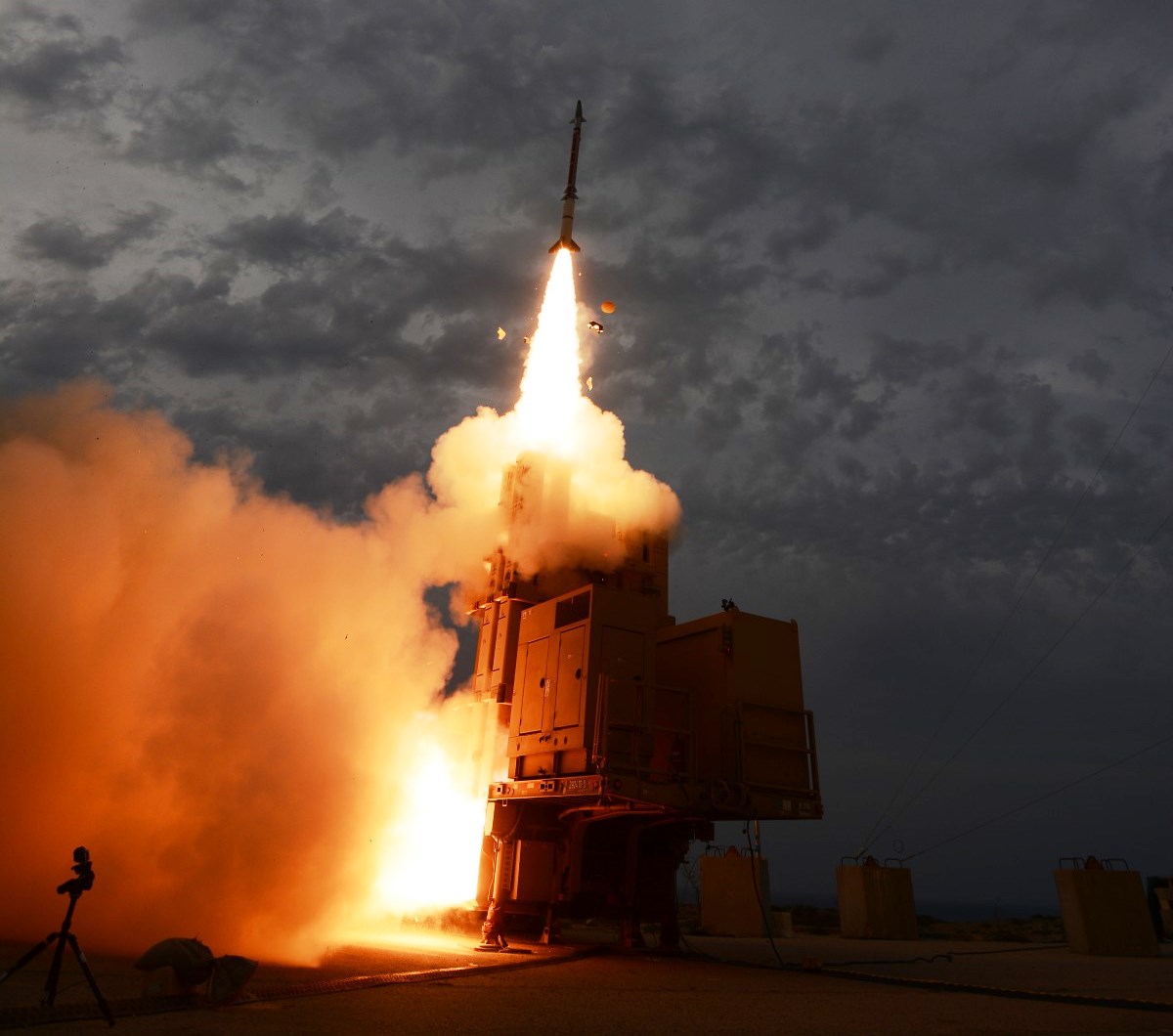
David's Sling is designed to intercept aircraft, drones and cruise missiles.
Israel also has US Patriot systems in operation that can reach further than the Arrow 3.
The long-range systems are designed to reach beyond the Earth's atmosphere.
"For ballistic missiles that go out of the atmosphere, travel along and then re-enter the atmosphere down to their target," Mr Shoebridge said.
"It looks like if Iran launched about 180 missiles, mainly a mix of ballistic missiles, then that layered system has been very effective."
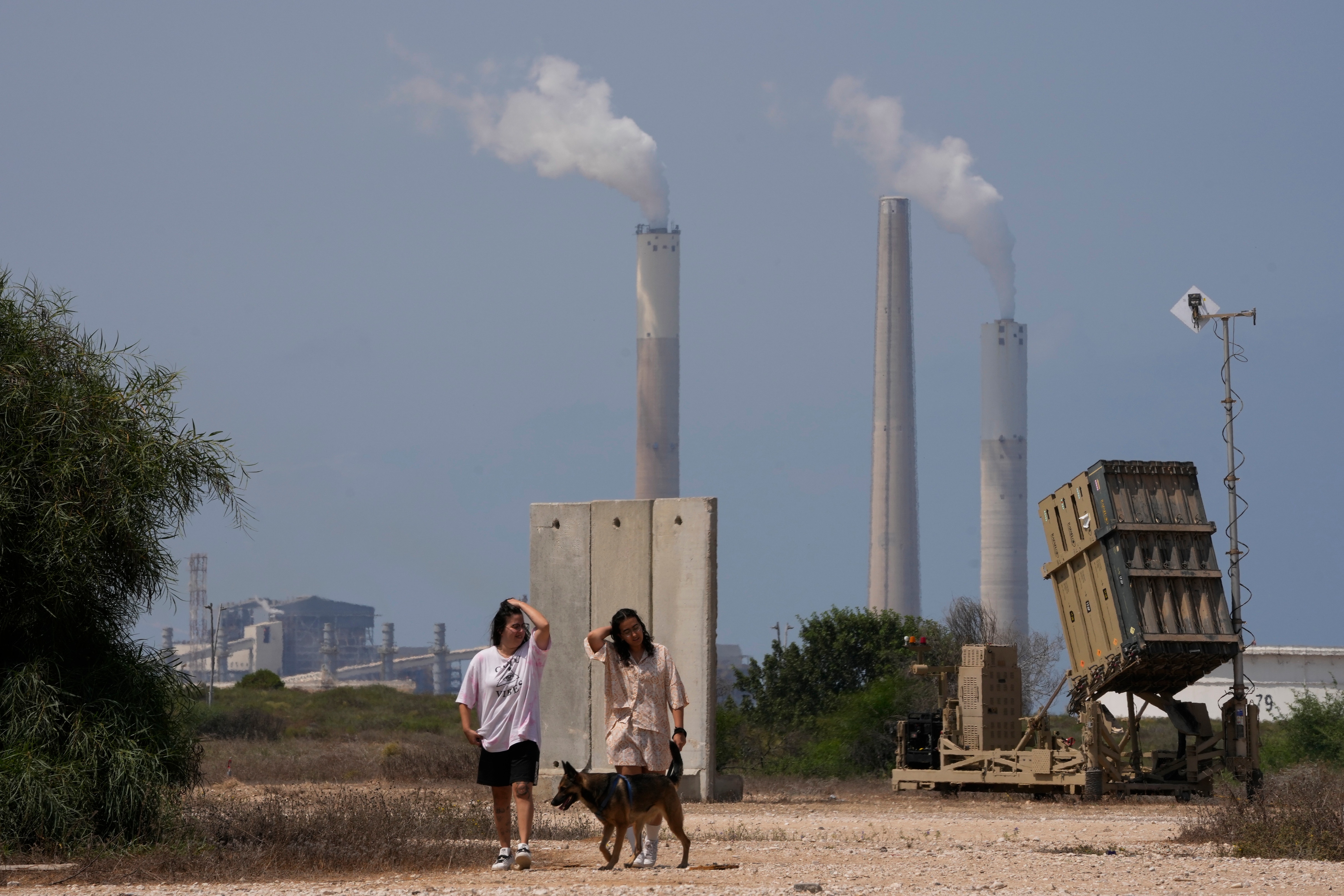
Israelis walk next to a battery of Israel's Iron Dome defence missile system in Ashkelon, southern Israel.
Why is Iran attacking Israel?
Iran described the campaign as defensive and aimed at Israeli military facilities.
Iran's state news agency said three Israeli military bases had been targeted.
In a statement, Iran's Revolutionary Guard said the attack was in response to the killings of Hamas leader Ismail Haniyeh, Hezbollah leader Hassan Nasrallah and senior Revolutionary Guard commander Abbas Nilforooshan.
The attack also came a day after the Israeli military said its army has crossed the border into Lebanon and is conducting "localised ground raids" on Hezbollah positions.
Iran has warned Israel it would face further attacks if it responded.
Israeli Prime Minister Benjamin Netanyahu vowed to hit back.
"Iran made a big mistake tonight — and it will pay for it," he said at the outset of an emergency political security cabinet meeting late on Tuesday, according to a statement.
Washington also said it would work with longtime ally Israel to make sure Iran faced "severe consequences" for Tuesday's attack.
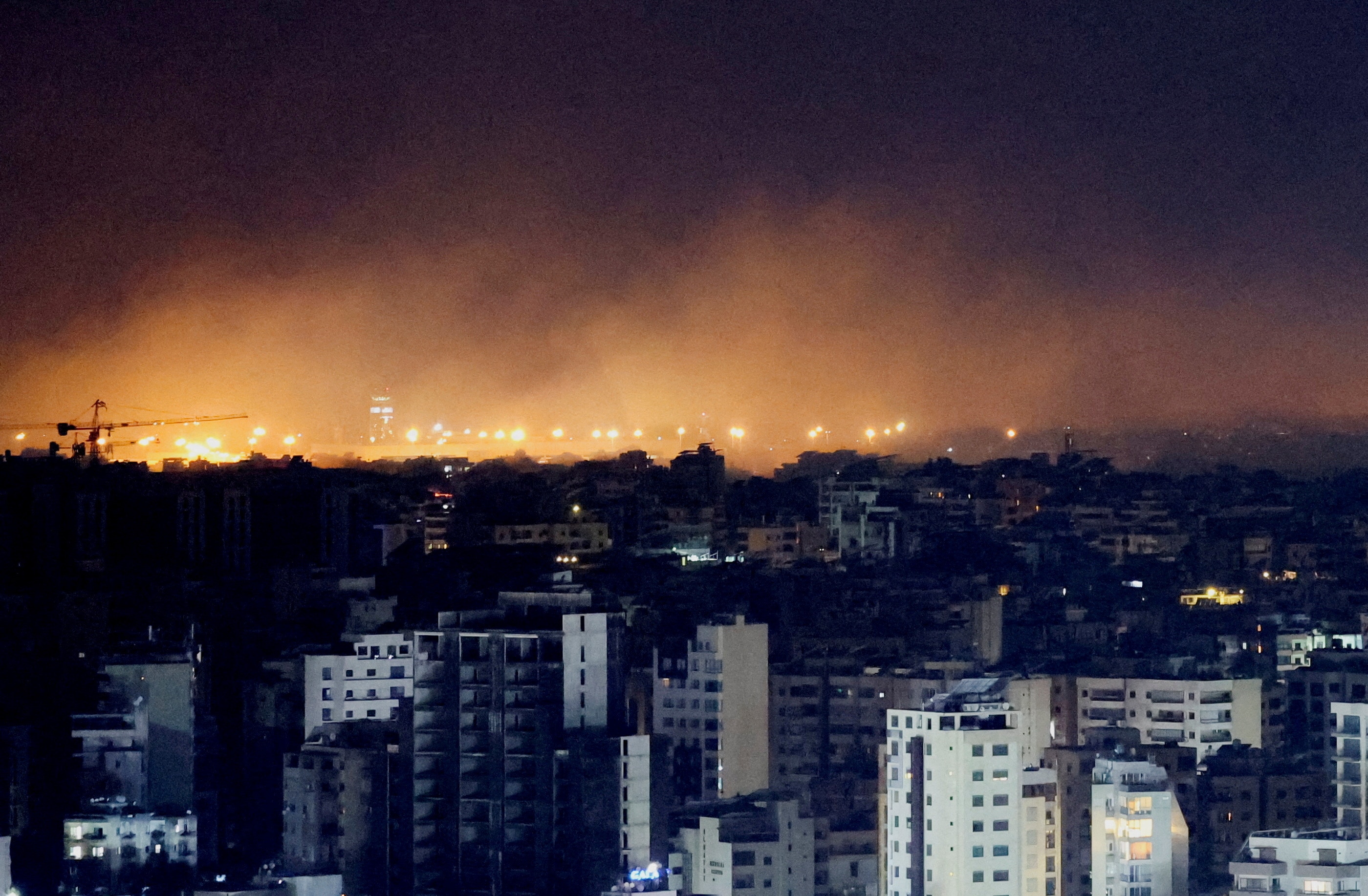
Smoke rises over Beirut's southern suburbs after a strike amid ongoing hostilities between Hezbollah and Israeli forces.
Experts have said that further escalation and large missile strikes could potentially swarm Israel's air defence systems.
And the closer strikes came to populated cities and the centre of country, then more damage would be likely due to shrapnel and debris.
Mr Shoebridge said even if Iran and its proxies had thousands more missiles stockpiled, it take times to plan large-scale attacks.
"It's not that simple to launch barrages," he said.
"And if you if launch a very large number of missiles, you're going to expose yourself in your preparations, and you're going to be subject yourself to pre-emptive strikes to stop you from launching.
"And that's exactly what happened to Hezbollah last week."
ABC/Wires
By:https://www.abc.net.au/news/2024-10-02/iran-ballistic-missile-attack-israel-iron-dome-air-defence/104420966(责任编辑:admin)
下一篇:One of Vietnam's high-profile political prisoners refused amnesty. Prison guards forced him on a plane anyway
 Socceroos rescue a point
Socceroos rescue a point  Wallabies thrash Wales 52
Wallabies thrash Wales 52 Jake Paul beats Mike Tyso
Jake Paul beats Mike Tyso Live updates: England vs
Live updates: England vs  US election 2024: Donald
US election 2024: Donald  US election live: Kamala
US election live: Kamala
- ·North Korea's latest weapon agains
- ·Hezbollah says Israel 'cannot impo
- ·Inside the rise of US oligarchs and how
- ·Thailand's worst suspected serial
- ·Tabi shoes are turning heads from Holly
- ·FBI arrests Florida man planning attack
- ·Illegal immigrant gets life sentence fo
- ·Bibles, water, watches and sneakers: Do
- ·North Korea's latest weapon against
- ·Hezbollah says Israel 'cannot impose
- ·Inside the rise of US oligarchs and how i
- ·Thailand's worst suspected serial ki
- ·Tabi shoes are turning heads from Hollywo
- ·FBI arrests Florida man planning attack o
- ·Illegal immigrant gets life sentence for
- ·Bibles, water, watches and sneakers: Dona
- ·US to give Kyiv anti-personnel landmines
- ·An arrest warrant for Benjamin Netanyahu
- ·One of Vietnam's high-profile politi
- ·Shanghai Walmart Attack: A Man Randomly S
- ·South Korean police officers jailed over
- ·Cambodia publicly shames maid deported af
- ·North Korea to use all forces including n
- ·Philippines condemns China attack of Viet
- ·US adds 2 more Chinese companies to Uyghu
- ·North Korean defector steals South Korean
- ·Malaysia deports Cambodian worker for cal
- ·Rebels battle for Myanmar junta’s weste

